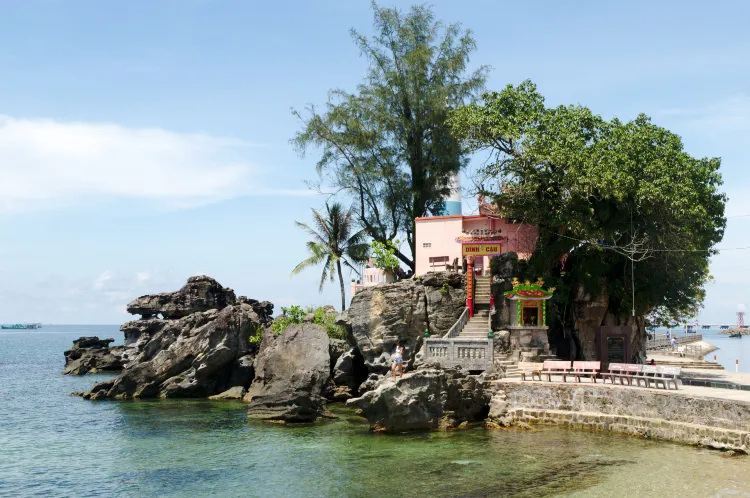
Perched dramatically on an oddly shaped cluster of rocks where the Duong Dong River flows into the Gulf of Thailand, Dinh Cau Rock is arguably Phu Quoc's most recognized landmark. Connected to the mainland by a short, elegant stone bridge, this natural formation rises above the water, commanding attention from the nearby harbor and beach. At its highest point sits a quaint Buddhist temple, Dinh Cau Temple, accompanied by a functioning lighthouse, both adding to its picturesque silhouette against the sea and sky, especially as the sun begins to set.
The temple itself holds deep spiritual significance for the local community, particularly for fishermen. It is dedicated to Thien Hau, the Goddess of the Sea, who is revered as a protector of seafarers. Before embarking on fishing trips, many locals visit the temple to pray for safe passage, calm waters, and a prosperous catch. This enduring tradition makes Dinh Cau Rock not just a scenic spot, but a living cultural site reflecting the island's maritime heritage and the deep connection its people have with the ocean.
For visitors, Dinh Cau Rock offers a multifaceted experience. Crossing the bridge provides lovely views back towards Duong Dong town and the bustling fishing harbor. Climbing the stone steps leads to the temple courtyard, where one can observe local customs, admire the modest architecture, and enjoy breathtaking panoramic views stretching across the western coastline, including Long Beach. It's an excellent spot for photography, particularly during sunset when the sky often puts on a spectacular display. Its proximity to the Duong Dong Night Market makes it easy to combine a visit with an evening exploration of local food and crafts.